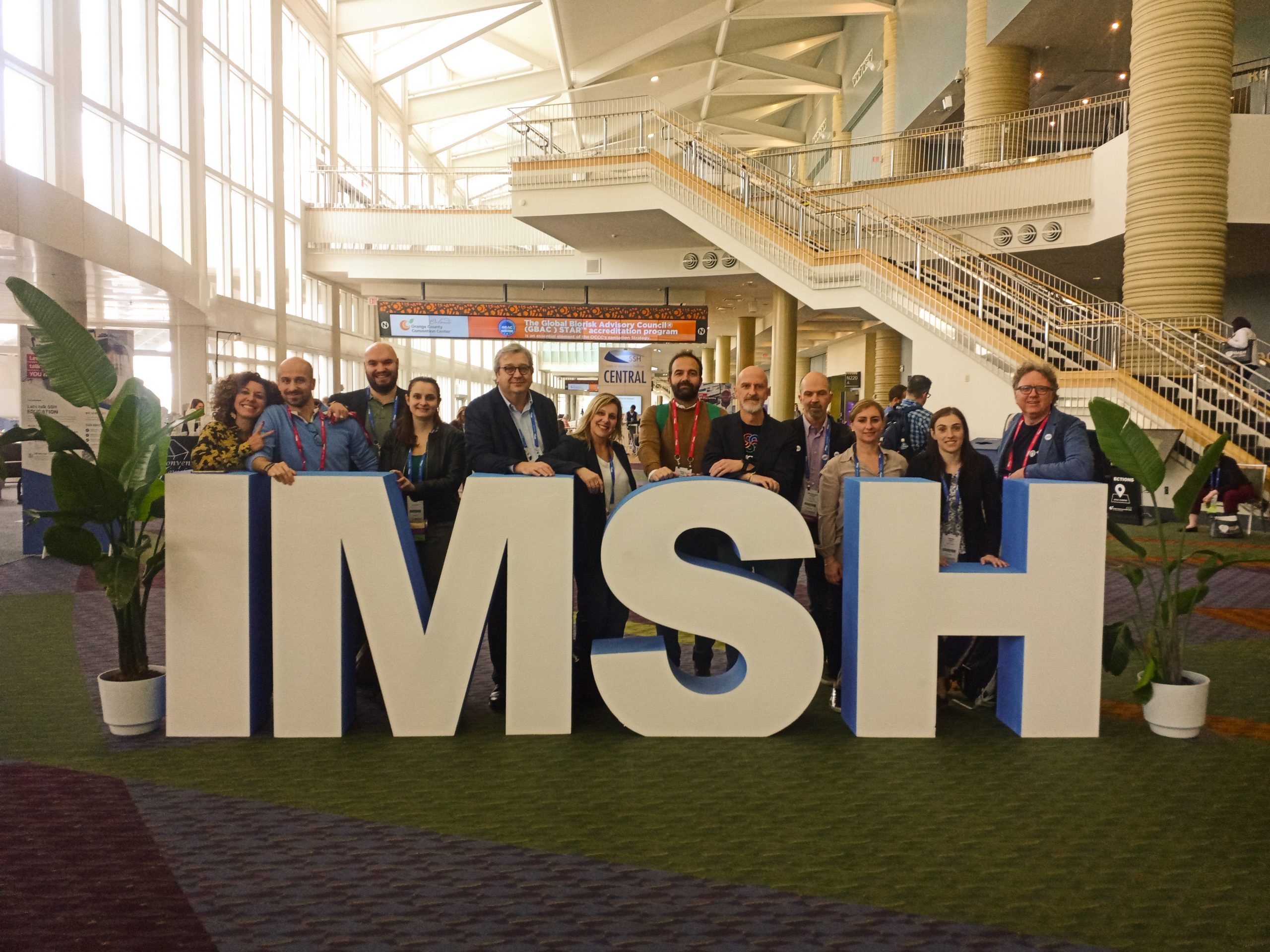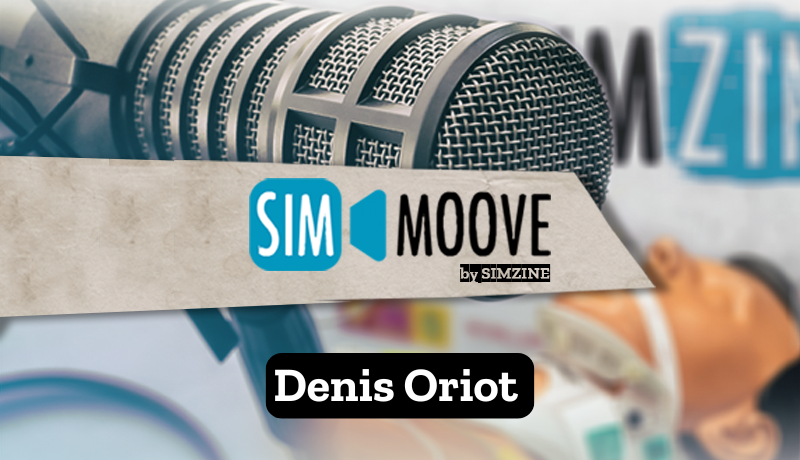IMSH 2023 told by a young anesthesiologist with a passion for simulation and technology
After 8 years in the simulation world, where I entered as a technologist and grew up as an anesthesiologist, with a turbulent end of residency at the mercy of COVID, I was finally able to attend IMSH for the first time.
I have always considered it a “congress” even if, experience in my pocket, it would deserve to be called a “fair”, but it would undermine part of the soul of this large and comprehensive event in the world of simulation.
Like (almost) everything in the United States, it’s done big. More than 100 exhibitors, over 4000 congress participants, and a few hundred sessions brought a small world inside a congress center so vast that we did not occupy even a quarter of the space and rooms available. To accompany everything, the warm days of Florida and a rental car to explore the endless American roads (a visit to the Kennedy Space Center is a must!).
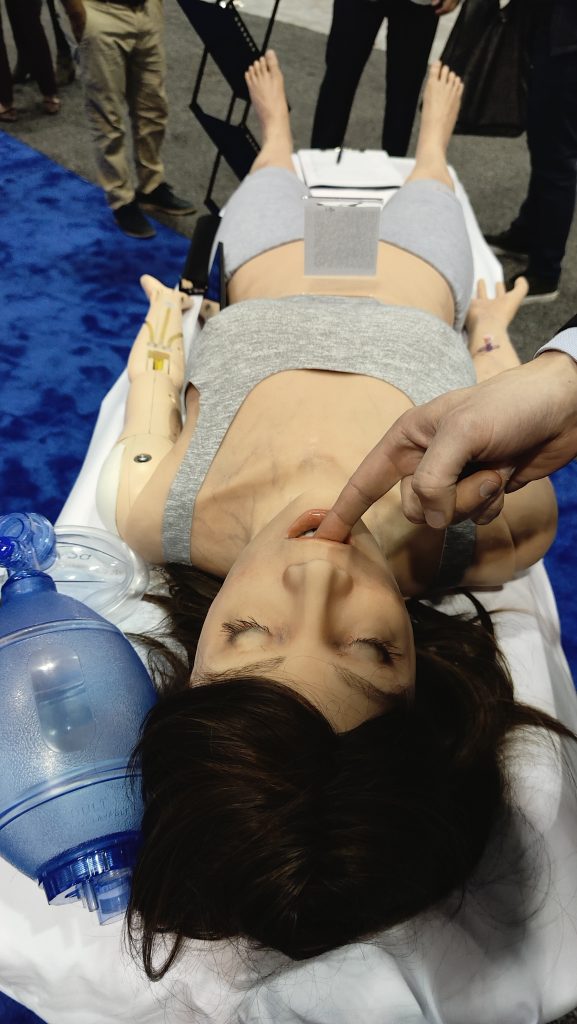
Having a background as a technologist, I was immediately captivated by the innovations in the field of virtual reality and material technology. In particular, new high-density silicones make it possible to give the simulators an extremely realistic appearance and greater resistance to perforations, without having to change the skin too frequently for aesthetic or wear reasons. An example, “Leonardo” and “Lisa”, by MedVision, but also the simulators by Tacmed, defined as “Marine-proof” in honor of their resistance in outdoor simulations.

Great space was given to the simulators’ flexibility of use, with the possibility of “disassembling” some advanced-simulation manikins to use their individual parts as skill trainers, to build training circuits with a single product and, when needed, build complex scenarios without having to resort to other products. Here too I was very impressed by the Tacmed simulator, but also a medium-fidelity device such as Atlas by iSimulate demonstrates extreme flexibility: the arms can be detached to be used as skill trainers, or as “false arms” in simulated patients. Furthermore, the manikin monitor exists as a standalone product (REALITi 360) and can be used on simulated patients but also on older low-fidelity simulators, with dozens of selectable monitor, defibrillator and ventilator layouts.

From a surgical point of view, I was surprised by the wide range of choices: from a few hundred dollars for low-cost laparoscopic simulators (above all SimLap by Sim*Vivo or LapTap by 3-Dmed or, again, Enjoystich) to more complex solutions, such as those of Inovus Medica, up to high-end solutions for robotic or super-specialist surgery such as Robotix Mentor by Simbionix, a robotic surgery simulator, which offers the possibility to build a training curriculum that ranges from basic skills to complex multi-operator interventions.
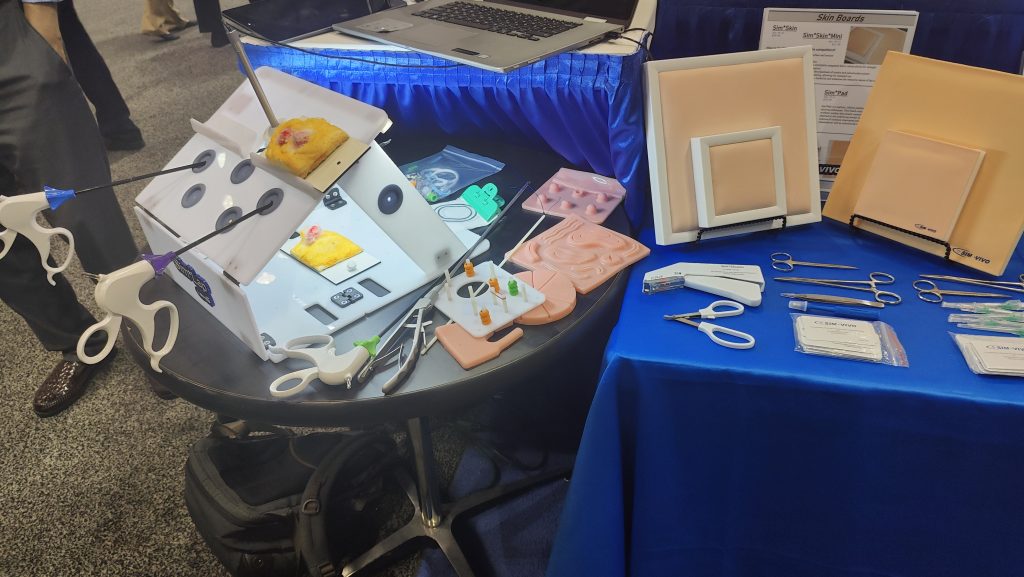
In surgery, 3D printing is finding practical application in the creation of anatomically correct models, reconstructed directly from CT images, with different consistencies depending on the tissue (Stratasys Medical‘s solutions really impressed me for their realism and quality). Their use ranges from basic training to the preparation of complex surgical interventions, to the experimentation of new operating procedures in complete safety.
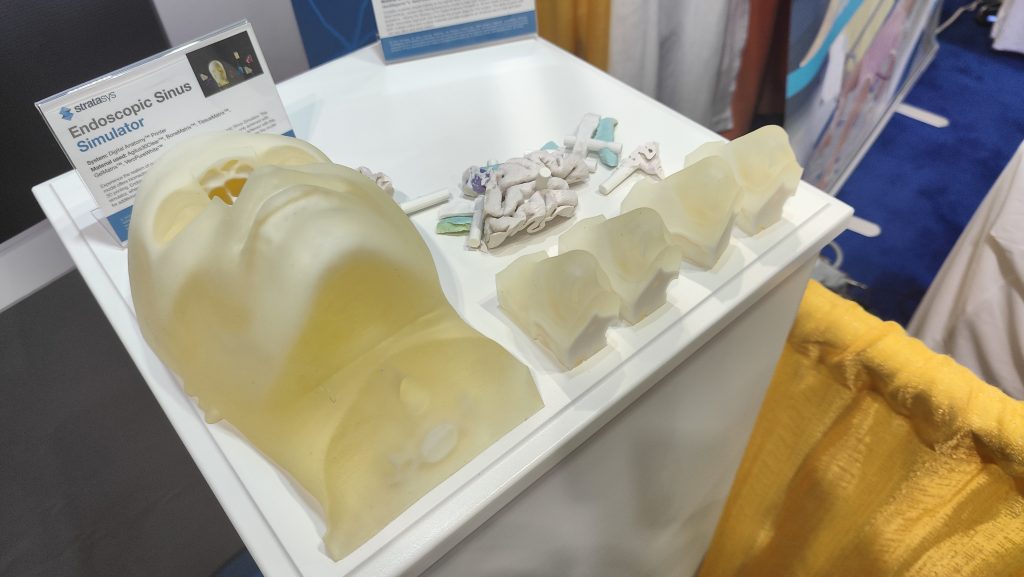
The real technological protagonist of this edition of IMSH, however, was virtual reality. Nowadays there is more and more talk of Metaverse also in the field of healthcare training. Dozens and dozens of different products allow you to build customized scenarios at reduced costs. An entry level visor, in fact, costs around 400 euros and with a few headsets and adequate software, learners can be trained even over long distances, without the need to take them to a simulation center. During the demos, I had the chance to explore this hugely growing world. In particular, I was seriously impressed by Lumeto’s InvolveXR, trying the suite in a virtual hospital room, together with an instructor connected in real time from another country, interacting and working together with him. The scenarios can also be built by the user and are extremely customizable: intra and pre-hospital scenarios, maxi-emergency situations, surgery… there is something for all tastes and professions.
Other solutions from which I was pleasantly impressed are those of SimXSimX, a big name in the sector with a large database of cases already built with various settings, or the UbiSim software, very effective for nursing training and evaluation: by adequately constructing the clinical scenario and by also setting up an eventual automatic evaluation of the actions, it is possible to train numerous professionals even remotely and with costs comparable (or lower?) to those of a medium-high fidelity simulation. However, the era of simulation centers and skill trainers has not ended yet; the Holy Grail of virtual reality remains the achievement of physical feedback to the touch of objects and the execution of maneuvers, which at the moment is quite rough, so VR training must still be complemented by field training.
In short, technology is increasingly central to the educational experience. Although I am very familiar with the use of innovative technologies and I already knew the existence of tools such as ChatGPT, I was truly amazed by SimConverse, a “patient simulator”: an artificial intelligence, with which you can speak by voice and which responds, interpreting the question and the tone of voice, like a real patient, on the basis of what was previously explained to him by the instructor (explained verbally, not programmed!). Although put under pressure during the demo, suddenly changing tone of voice and even putting the simulator in front of difficult choices, or ethical choices, the answers have always been very realistic and appropriate. And at the end of the session, the AI interprets the content of the conversation and provides feedback, verifying whether the user has asked the questions deemed appropriate by the instructor.
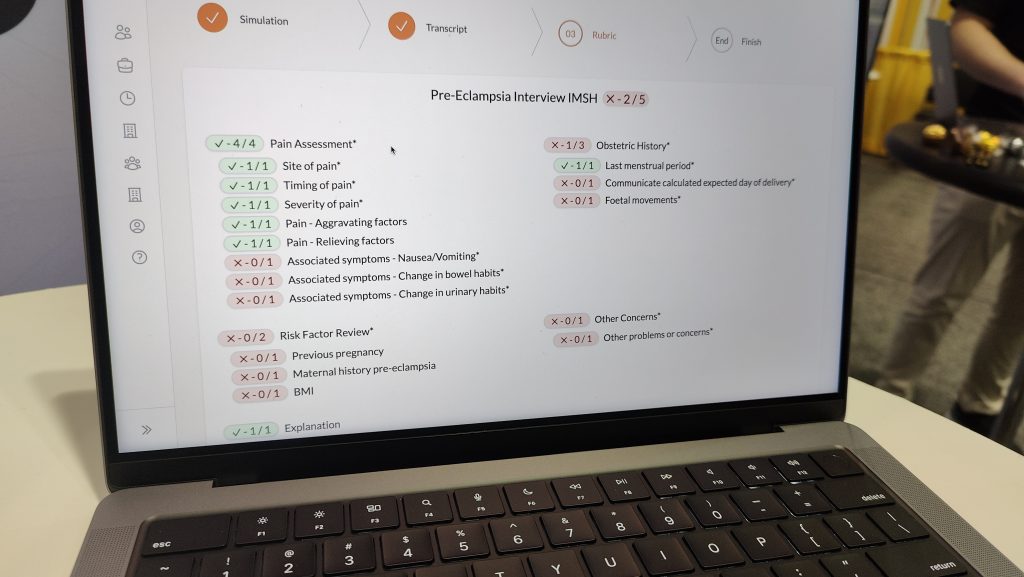
What about the sessions? Extremely varied: teaching, research, standardization and certifications, technique and technology… for all tastes and educational backgrounds, as well as very interesting speeches among which the opening session by Joe Mull on commitment in the workplace, and the closing speech by Tan Le, about the strength of diversity. I was struck by how simulation, in many hospitals, is deeply integrated into the working activity, with in situ simulations taking place simultaneously with the on-the-job activity to test new procedures, verify any deficiencies in existing ones and keep your mind and hands trained for the rarest situations. Many products presented met this need, such as the impressive National Mobile Campus of Best Practice Medicine.
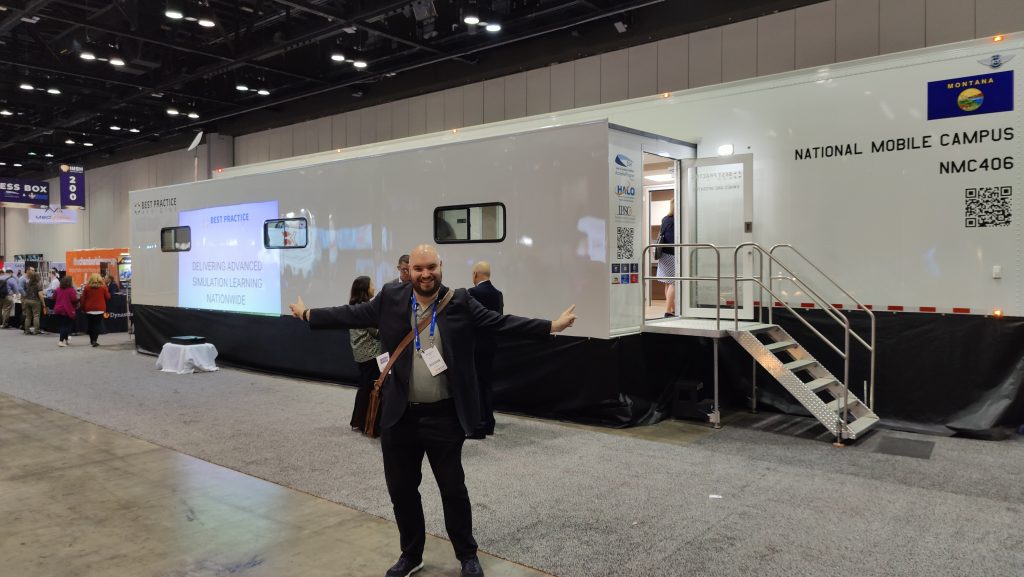
But the real highlight of IMSH is networkingbesides getting to know legends of the simulation world directly (such as Haru Okudaimmediate past president of SSH as well as the “inventor” of SimWar SimWar from which SIMCUP draws inspiration), stay in contact with fellow trainers with different backgrounds ignites ideas, stimulates the exchange of points of view and allows the creation of new training programs for universities, hospitals and the territory.
I will certainly return to IMSH 2024 in San Diego, knowing better what to look for: there are so many exhibitors that the 3 days of the congress are just enough to take a quick look at all the stands and try out the most interesting products. But it is also true that I will surely find many of the people I met this year, and with whom I have much more in common than just work and a passion for training.
READ ALSO



